Integrated Membership Growth Campaign @ SCVO
Integrated Membership Growth Campaign @ SCVO
Digital Marketer
Listen to the audio version of this article.
What makes someone stop scrolling and think: “This is exactly what we need”
That was the question driving this campaign. We weren’t selling a product. We were offering something harder to define: relevance, support and connection.
SCVO (Scottish Council for Voluntary Organisations) is Scotland’s national body for the third sector. It supports charities, voluntary groups and social enterprises with advice, training, digital services, policy advocacy, funding guidance and a collective voice to influence national decision‑making.
But not everyone knows this – or remembers. Some had been members before but hadn’t renewed their membership. Others had never come across it at all. This campaign was our chance to change that.
As the digital marketing lead on this project, I was responsible for strategy, implementation and optimisation. I worked closely with the lead designer to bring creative assets to life. And with a lean budget, I had to make every pound work as hard as possible.
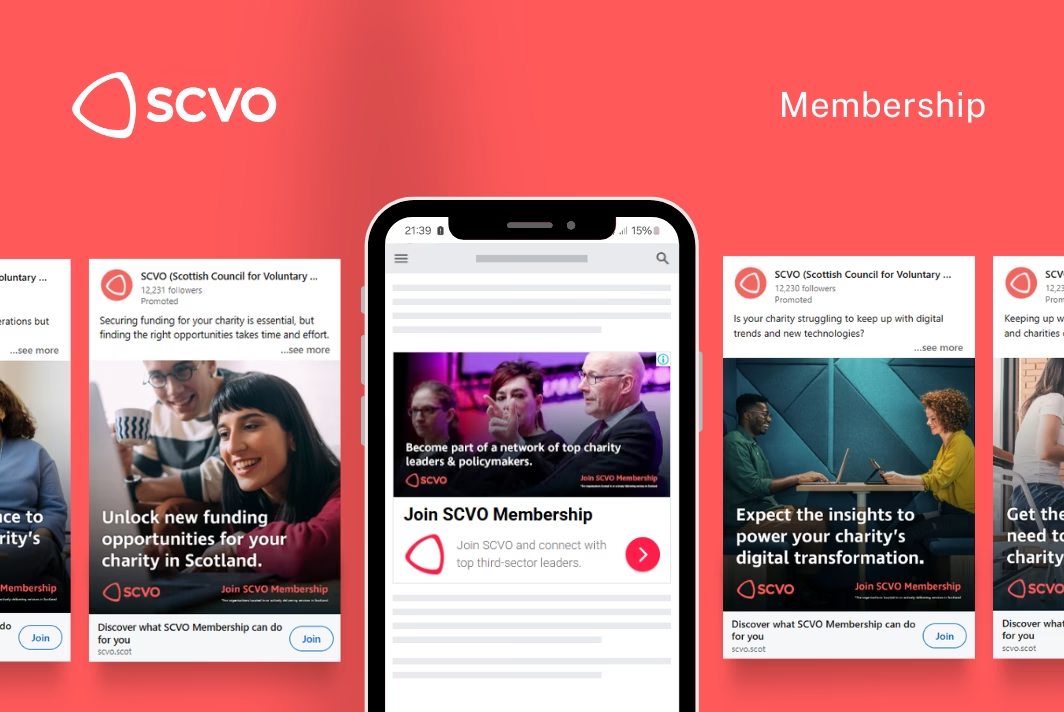
Brief:
Acquire 5 new paid memberships each month via LinkedIn Ads and Google PMax from March to June 2025. A realistic target designed to test and scale performance in the context of a low starting baseline, lean budget and no pre-existing funnel infrastructure. This was our chance to prove digital campaigns could drive membership growth and set a benchmark for the future.
Challenges:
Low awareness of benefits
Many organisations had no idea what SCVO membership offered. Others had previously joined but didn’t renew.
Mobile UX issues
One in 4 users visited on mobile, a figure expected to rise, yet the membership page wasn’t fully optimised for that journey.
No funnel infrastructure
There were no previous campaigns or benchmarks to build from, everything had to be created from scratch.
Lean budget
The five-per-month target reflected a realistic outcome given the spend and long conversion cycle.
Strategy:
No data. No benchmarks. So I went back to basics: find the right people, say the right thing and optimise relentlessly.
I paired LinkedIn’s precise B2B targeting with Google PMax’s automated scale. Together, they gave us reach and relevance.
Targeting focused on small, medium and large voluntary organisations with the need and capacity to invest in paid membership. Micro-organisations, already eligible for free access, were excluded.
Every ad spoke directly to a role: Chief Executives, Operational leaders, Trustees, Fundraising and HR decision makers, each with its own tailored value proposition.
Implementation:
I handled the end‑to‑end setup of both LinkedIn Ads and Google PMax: campaign structure, audiences, creative briefing, copywriting and launch.
All creatives were developed with A/B testing in mind. We produced 15 static image variations across landscape, square, and portrait formats, tailored for both platforms.
Messaging was split across three angles: product-focused, user-focused, and benefit-focused and mapped to individual personas. I wrote the ad copy and collaborated with lead designer John Ferguson to ensure visuals blended into feeds naturally. Each ad was crafted to feel like a personal invitation, speaking directly to the challenges and priorities of that role.
I also tested a video ad to benchmark performance against static formats.
Custom conversion goals and exclusions reduced overlap and improved clarity in PMax.
The campaign went live on 19 March 2025, timed for SCVO’s spring membership drive.
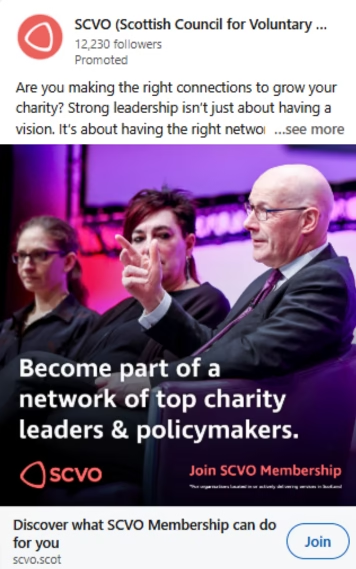
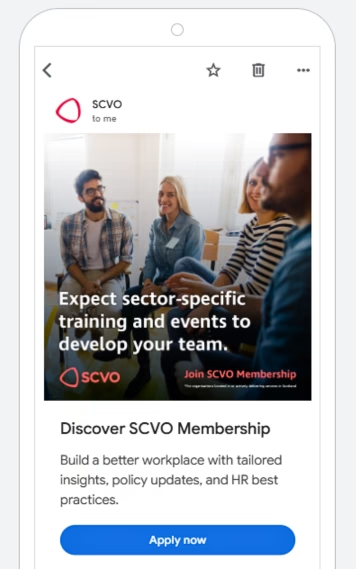
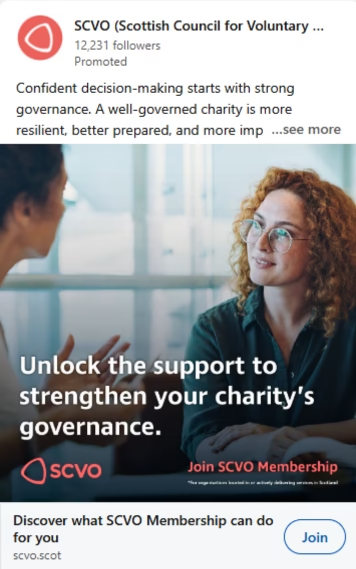

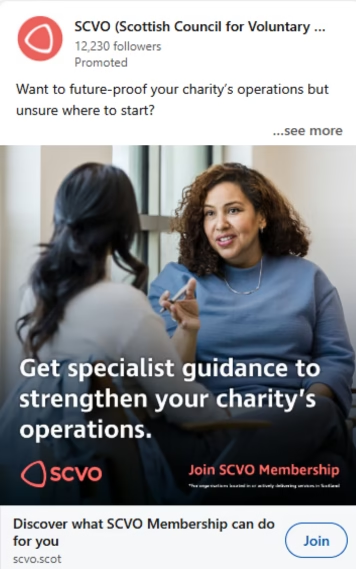
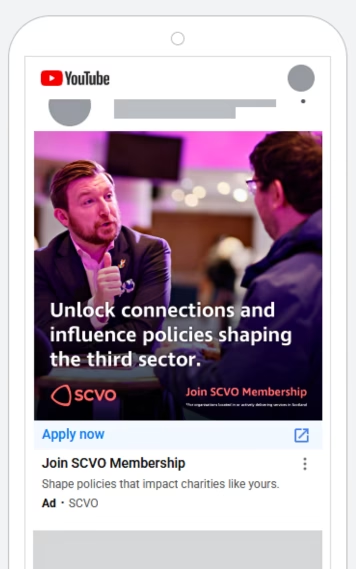
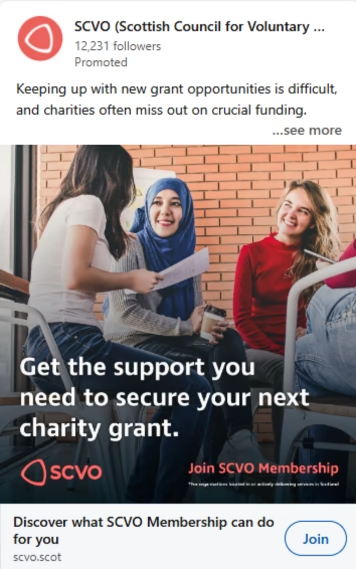
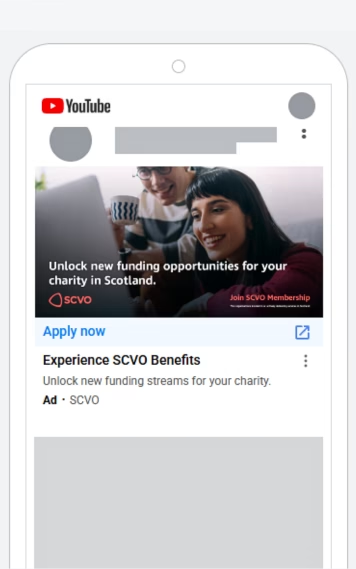
Creatives Credit: John Ferguson
Tracking & Reporting:
Vanity metrics weren’t enough. I needed clear, actionable data. So, I built a custom Looker Studio dashboard, pulling live data from:
- LinkedIn Campaign Manager
- Google Ads
- GA4
- Salesforce (to verify confirmed member conversions)
Key metrics included:
- number of new member registrations
- cost per acquisition
- page visits
- cost per click
- form starts and submits
But tracking wasn’t always simple:
- Cross‑device attribution: people clicked on the ad on mobile but signed up later on desktop.
- Multi‑user attribution: several senior leaders delegated the sign‑up to colleagues.
- Last‑click bias: in some cases UTM tracking showed ads as the first touchpoint, but organic search got the final credit.
- Self‑reported vs tracked attribution: some applicants arrived via campaign-tagged URLs but said they heard about us from “other organisations" in the application form.
These findings shaped how I interpreted performance, combining platform data with behavioural patterns and user feedback to get a fuller picture of what was working.
Optimisation:
Bi‑weekly reviews helped me refine performance quickly.
Key actions included:
- pausing underperforming ads
- refining copy and headlines for clarity
- scaling budget toward the highest‑converting creatives
- analysing drop‑offs and improving funnel flow
Insights? Benefit‑led messaging outperformed product‑focused ads, especially for fundraising and governance roles. LinkedIn proved strongest for medium to large organisations, while Google performed better for smaller ones.
Results:
2x
Target achievement
425%
Return on investment
115%
Increase in revenue
- 2x the initial target: 10+ paid memberships per month.
- 425% ROI: CPA of £78 against an average conversion value of £407.
- 115% increase in total membership revenue compared to the same period in 2024.
- 30% growth in monthly applications, holding steady throughout the campaign.
Takeaways:
Role-based, persona-led messaging beats generic brand ads.
Clear, benefit‑driven propositions convert better than feature lists.
Attribution in B2B is messy. You need multiple data points and context.
With a lean budget, focus and prioritisation are everything.
Skills:
- Conversion strategy
- Data Analytics
- Campaign Leadership
- Funnel Optimisation
- A/B Testing
- Channel Attribution
- Persona-based Copywriting
- Looker Studio dashboard
Recommendation:

